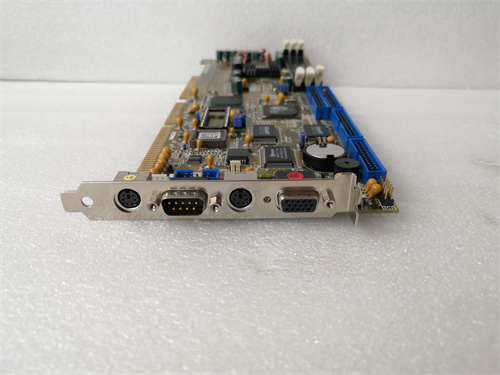Material Shape
Round Wire
Range of Application
Flame Retardant
Certification
ISO9001, CE, CCC, RoHS, VDE
Color
as Per Your Customers ′ Request
Transport Package
All Wooden, Steel Wooden or Steel Package
aluminium alloy conductor BS 50183 aaac almond for hot sale !
1.Specifications
AAAC bare conductor meets or exceeds the following ASTM specifications :
B-398 Aluminum Alloy 6201-T81 Wire for Electrical Purposes
B-399 Concentric-Lay-Stranded 6201-T81 Aluminum Alloy Conductors.
AAAC All aluminium alloy conductors
standard:B-398,B-399,Ardival, Aldrey or Almelec
overhead for primary,secondary power line.
AAAC All aluminium alloy conductors for American B-398/ B-399 standard
Detailed Product Description
2.Applications
It can replace part of aluminum conductors or ACSR for overhead distribution lines .Temperature for continuours use is up to 90 ºC.Temperature of heat-resistance aluminum alloy strands is up to 150 ºC and above .It has high current carrying capacity and good corrosion performance.
Construction
Standard 6201-T81 high strength aluminum conductors, conforming to ASTM Specification B-399, are concentric-lay- stranded, similar in construction and appearance to 1350 grade aluminum conductors. Standard 6201 alloy conductors are similar to other alloy conductors commercially known as Ardival, Aldrey or Almelec. They were developed to fill the need for an economical conductor for overhead applications requiring higher strength than that obtainable with 1350 grade aluminum conductors, but without a steel core. The DC resistance at 20°C of the 6201-T81 conductors and of the standard ACSRs of the same diameter are approximately the same. Conductors of the 6201-T81 alloys are harder and, therefore, have a greater resistance to abrasion than conductors of 1350-H19 grade aluminum.
| Total Area | Overall Diameter |
| AWG or MCM | mm | mm |
| 6 | 13.3 | 4.65 |
| 4 | 21.1 | 5.88 |
| 2 | 33.6 | 7.41 |
| 0 | 53.5 | 9.36 |
| 2/0 | 67.4 | 10.50 |
| 3/0 | 85.0 | 11.79 |
| 4/0 | 107.2 | 13.26 |
| 250 | 126.7 | 14.55 |
| 300 | 152.0 | 15.95 |
| 350 | 177.3 | 17.25 |
| 400 | 202.7 | 18.45 |
| 450 | 228.0 | 19.55 |
| 500 | 253.4 | 20.60 |
| 550 | 278.7 | 21.70 |
| 600 | 304.0 | 22.61 |
| 650 | 329.4 | 23.59 |
| 700 | 354.7 | 24.43 |
| 750 | 380.0 | 25.34 |
| 800 | 405.4 | 26.11 |
| 900 | 456.0 | 27.72 |
| ALUMINIUM ALLOY CONDUCTOR ASTM B399 |
| Code Name | Area | Size&Stranding of ACSR with equal diameter | No. and diameter | Overall diameter | Weight | Nominal breaking load | MAX .DC resistance at 20ºC |
| Nominal | Actual | AWG or MCM | Al/St |
| | MCM | mm2 | | | mm | mm | kg/km | kN | ohm/km |
| AKRON | 30.58 | 15.48 | 6 | 6/1 | 7/1.68 | 5.04 | 42.7 | 4.92 | 0.3966 |
| ALTON | 48.69 | 24.71 | 4 | 6/1 | 7/2.12 | 6.35 | 68 | 7.84 | 0.3811 |
| AMES | 77.47 | 39.22 | 2 | 6/1 | 7/2.67 | 8.02 | 108 | 12.45 | 0.3671 |
| AZUSA | 123.3 | 62.38 | 1/0 | 6/1 | 7/3.37 | 10.11 | 172 | 18.97 | 0.3524 |
| ANAHEIM | 155.4 | 78.65 | 2/0 | 6/1 | 7/3.78 | 11.35 | 217 | 23.93 | 0.3448 |
| AMHERST | 195.7 | 99.22 | 3/0 | 6/1 | 7/4.25 | 12.75 | 273 | 30.18 | 0.3375 |
| ALLIANCE | 246.9 | 125.1 | 4/0 | 6/1 | 7/4.77 | 14.31 | 345 | 38.05 | 0.3306 |
| BUTTE | 312.8 | 158.6 | 266.8 | 26/7 | 19/3.26 | 16.3 | 437 | 48.76 | 0.3196 |
| CANTON | 394.5 | 199.9 | 366.4 | 26/7 | 19/3.66 | 18.3 | 551 | 58.91 | 0.3124 |
| CAIRO | 465.4 | 235.8 | 397.5 | 26/7 | 19/3.98 | 19.88 | 650 | 69.48 | 0.3071 |
| DARIEN | 559.5 | 283.5 | 477 | 26/7 | 19/4.36 | 21.79 | 781 | 83.52 | 0.3014 |
| ELGIN | 652.4 | 330.6 | 556.5 | 26/7 | 19/4.71 | 23.54 | 911 | 97.42 | 0.2966 |
| FLINT | 740.8 | 375.3 | 636 | 26/7 | 37/3.59 | 25.16 | 1035 | 108.21 | 0.2917 |
| GREELY | 927.2 | 469.8 | 795 | 26/7 | 37/4.02 | 28.14 | 1295 | 135.47 | 0.2846 |
3.Overhead Conductors
(1).What is the difference between ACSR, AAC and AAAC Conductors?
The biggest difference between AAC, AAAC, and ACSR conductors are the materials they are constructed from. AAC is manufactured from electrolytically refined aluminium with a 99.7% minimum purity, AAAC is made from an Aluminium alloy, and ACSR contains a combination of Aluminium reinforced with Steel.
The second factor that differentiates the three cables is their resistance to corrosion, which is important for the longevity of the cable. ACSR has a poorer resistance to corrosion, as it contains steel, which is prone to rust. AAAC and AAC have a better corrosion resistance, due to the fact that they are largely or completely aluminium.
In an ACSR the galvanised steel core carries the mechanical load and the high purity aluminium carries the current. These utilise the lower thermal expansion coefficient of steel compared to aluminium, which the aluminium based conductors AAC and AAAC are unable to do.
(2). What do ACSR, AAC and AAAC Conductors have in common?
ACSR, AAC and AAAC are all used in overhead line applications, and although for different specific applications, they are all involved in power distribution.
Could you any order about AAAC conductor ,please don't hesitate to contact me !















